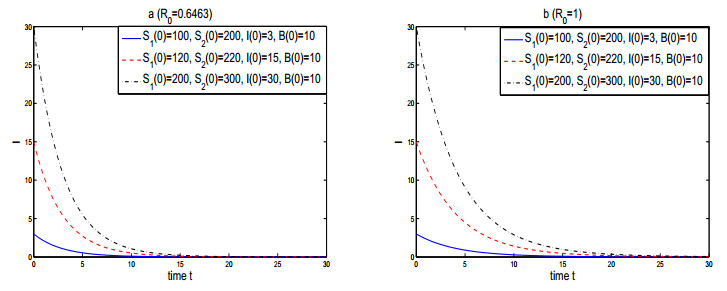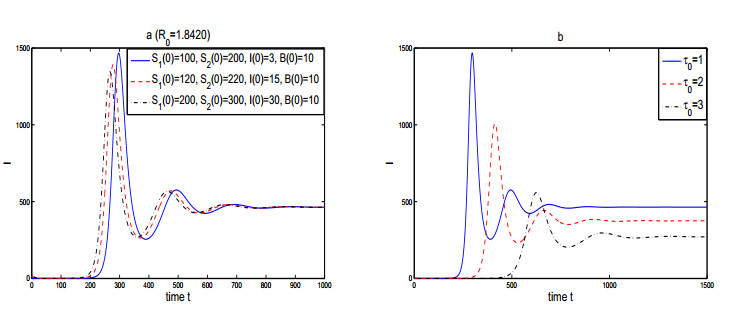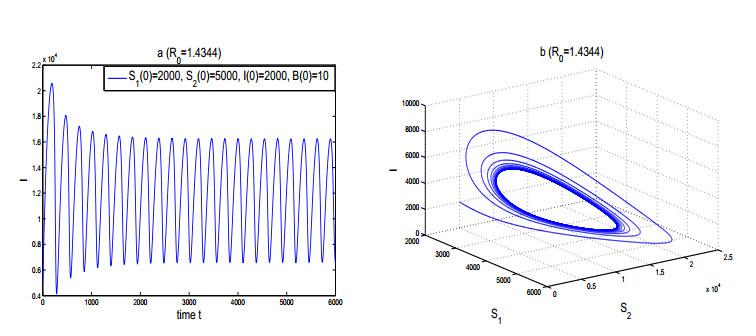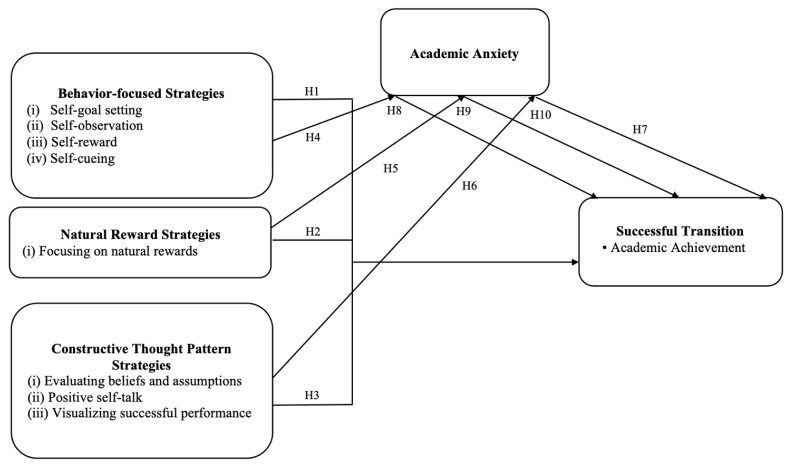|
[1]
|
Gale, T. and Parker, S., Navigating student transition in higher education: Induction, development, becoming. In: Universities in Transition, H. Brook, D. Fergie, M. Maeorg and D. Michell Eds., 2014, 13‒39. University of Adelaide Press. https://doi.org/10.20851/universities-transition-01
|
|
[2]
|
Burns, A., Holford, P. and Andronicos, N., Enhancing understanding of foundation concepts in first year university STEM: evaluation of an asynchronous online interactive lesson. Interactive Learning Environments, 2022, 30(7): 1170–1182. https://doi.org/10.1080/10494820.2020.1712426 doi: 10.1080/10494820.2020.1712426

|
|
[3]
|
Coronella, T., Work in progress: Effect of pre-college academic activities on the sense of belonging of first-year engineering students. 2022 ASEE Annual Conference & Exposition. Minneapolis, 2022, 1–15.
|
|
[4]
|
De Clercq, M., Parmentier, M. and Van Meenen, F., Fair enough?! Investigating the specific challenges of diverse university first-year students. Research Papers in Education, 2022, 39(1): 113‒133. https://doi.org/10.1080/02671522.2022.2089214 doi: 10.1080/02671522.2022.2089214

|
|
[5]
|
García-Ros, R., Pérez-González, F., Cavas-Martínez, F. and Tomás, J.M., Effects of pre-college variables and first-year engineering students' experiences on academic achievement and retention: a structural model. International Journal of Technology and Design Education, 2019, 29(4): 915–928. https://doi.org/10.1007/s10798-018-9466-z doi: 10.1007/s10798-018-9466-z

|
|
[6]
|
Geisler, S. and Rolka, K., "That wasn't the Math I wanted to do!"—Students' beliefs during the transition from school to University Mathematics. International Journal of Science and Mathematics Education, 2021, 19(3): 599‒618. https://doi.org/10.1007/s10763-020-10072-y doi: 10.1007/s10763-020-10072-y

|
|
[7]
|
Kosiol, T., Rach, S. and Ufer, S., (Which) Mathematics interest is important for a successful transition to a university study program?. International Journal of Science and Mathematics Education, 2019, 17(7): 1359–1380. https://doi.org/10.1007/s10763-018-9925-8 doi: 10.1007/s10763-018-9925-8

|
|
[8]
|
Kroshus, E., Hawrilenko, M. and Browning, A., Stress, self-compassion, and well-being during the transition to college. Social Science and Medicine, 2021,269: 113514. https://doi.org/10.1016/j.socscimed.2020.113514 doi: 10.1016/j.socscimed.2020.113514

|
|
[9]
|
Lin, S., Mastrokoukou, S., Longobardi, C., Bozzato, P., Gastaldi, F.G.M. and Berchiatti, M., Students' transition into higher education: The role of self-efficacy, regulation strategies, and academic achievements. Higher Education Quarterly, 2023, 77(1): 121–137. https://doi.org/10.1111/hequ.12374 doi: 10.1111/hequ.12374

|
|
[10]
|
Milienos, F.S., Rentzios, C., Catrysse, L., Gijbels, D., Mastrokoukou, S., Longobardi, C., et al., The contribution of learning and mental health variables in first-year students' profiles. Frontiers in Psychology, 2021, 12: 627118. https://doi.org/10.3389/fpsyg.2021.627118 doi: 10.3389/fpsyg.2021.627118

|
|
[11]
|
Terpstra-Tong, J.L.Y. and Ahmad, A., High school-university disconnect: A complex issue in Malaysia. International Journal of Educational Management, 2018, 32(5): 851–865. https://doi.org/10.1108/IJEM-10-2016-0214 doi: 10.1108/IJEM-10-2016-0214

|
|
[12]
|
Wilcox, G. and Nordstokke, D., Predictors of university student satisfaction with life, academic self-efficacy, and achievement in the first year. Canadian Journal of Higher Education, 2019, 49(1): 104–124. https://doi.org/10.7202/1060826ar doi: 10.7202/1060826ar

|
|
[13]
|
Bacon, D.R. and Bean, B., GPA in research studies: An invaluable but neglected opportunity. Journal of Marketing Education, 2006, 28(1): 35–42. https://doi.org/10.1177/0273475305284638 doi: 10.1177/0273475305284638

|
|
[14]
|
Kroshus, E., Hawrilenko, M. and Browning, A., Stress, self-compassion, and well-being during the transition to college. Social Science and Medicine, 2021,269: 113514. https://doi.org/10.1016/j.socscimed.2020.113514 doi: 10.1016/j.socscimed.2020.113514

|
|
[15]
|
Hameed, N.M.S., Pikat pelajar dalami STEM, in Harian Metro. 2022, New Straits Times Press (M) Bhd., Kuala Lumpur, Malaysia.
|
|
[16]
|
Muhammad, A. and Rahman, S.N.A., Ke mana mereka selepas SPM? in BERNAMA. 2023, The Malaysian National News Agency, Kuala Lumpur, Malaysia.
|
|
[17]
|
Matriculation Division, Pelan transformasi program matrikulasi Kementerian Pendidikan Malaysia 2021 – 2025, Ministry of Education Malaysia, Putrajaya, Malaysia.
|
|
[18]
|
Education Planning and Research Division, 2023 Malaysia educational statistics, Ministry of Education Malaysia, Putrajaya, Malaysia.
|
|
[19]
|
Hamid, A.J., Why do kids avoid the STEM route? in New Straits Times. 2017, New Straits Times Press (M) Bhd., Kuala Lumpur, Malaysia.
|
|
[20]
|
Huda, N., Malaysia is facing a decline in STEM intake. in BUSINESSTODAY. 2023, Reach Publishing Sdn Bhd., Kuala Lumpur, Malaysia.
|
|
[21]
|
Ismail, M.H., Salleh, M.F.M. and Nasir, N.A.M, The issues and challenges in empowering STEM on Science teachers in Malaysian secondary schools. International Journal of Academic Research in Business and Social Sciences, 2019, 9(13): 430‒444. https://doi.org/10.6007/ijarbss/v9-i13/6869 doi: 10.6007/ijarbss/v9-i13/6869

|
|
[22]
|
Wei, W.K. and Maat, S.M., The attitude of primary school teachers towards STEM education. TEM Journal, 2020, 9(3). https://doi.org/10.18421/TEM93-53 doi: 10.18421/TEM93-53

|
|
[23]
|
Wen, H.J., STEM-ming the decline. in The Star. 2023, Star Media Group Berhad, Petaling Jaya, Malaysia.
|
|
[24]
|
Astro AWANI, KPM diarah terajui hala tuju STEM - Perdana Menteri. in Astro AWANI, 2022, Astro Awani Network Sdn. Bhd., Kuala Lumpur, Malaysia.
|
|
[25]
|
Department of Statistics Malaysia, Survey: 72.1% of M'sians not keen on higher education after SPM, want to work as influencers or in gig economy instead, 2022, Department of Statistics Malaysia, Putrajaya, Malaysia.
|
|
[26]
|
Vijaindren, A., 'Malaysia needs 500,000 scientists and engineers by 2020.' in New Straits Times. 2018. Media Prima Group, Kuala Lumpur, Malaysia.
|
|
[27]
|
Kamsi, N.S., Radin Firdaus, R.B., Abdul Razak, F.D. and Ridha Siregar, M., Realizing Industry 4.0 through STEM education: But why STEM is not preferred?, IOP Conference Series: Materials Science and Engineering, 2019,506(1): 012005. https://doi.org/10.1088/1757-899X/506/1/012005 doi: 10.1088/1757-899X/506/1/012005

|
|
[28]
|
Nawi, R.M., Penerapan STEM di peringkat universiti, apa kesannya?. in Sinar Harian. 2022. Karangkraf Group, Shah Alam, Selangor.
|
|
[29]
|
Chan, E., 'Develop new ideas to promote STEM.' in The Star. 2023. Star Media Group Berhad, Petaling Jaya, Malaysia.
|
|
[30]
|
World Bank, Aiming high - Navigating the next stage of Malaysia's development. 2021, World Bank Group, Washington, United States.
|
|
[31]
|
WEF, The future of jobs report 2020. 2020, World Economic Forum, Canton of Geneva, Switzerland.
|
|
[32]
|
Jamaluddin, F., Razak, A.Z.A. and Rahim, S.S.A., Navigating the challenges and future pathways of STEM education in Asia-Pacific region: A comprehensive scoping review. STEM Education, 2024, 5(1): 53‒88. https://doi.org/10.3934/steme.2025004 doi: 10.3934/steme.2025004

|
|
[33]
|
Neck, C.P., Manz, C.C. and Houghton, J.D., Self-leadership: The Definitive Guide to Personal Excellence. 2017, Los Angeles, USA: SAGE Publications, Inc.
|
|
[34]
|
Neck, C.P. and Houghton, J.D., Two decades of self-leadership theory and research: Past developments, present trends, and future possibilities. Journal of Managerial Psychology, 2006, 21(4): 270–295. https://doi.org/10.1108/02683940610663097 doi: 10.1108/02683940610663097

|
|
[35]
|
Alam Afridi, F.E., Jan Kakakhel, S., Ayaz, B. and Irfan, M., Self-leadership, self-efficacy, and students adaptive online learning performance during the COVID-19 crises. International Journal of Innovation, Creativity and Change, 2021, 15(6): 371–391.
|
|
[36]
|
Boonyarit, I., When learners lead themselves: A psychometric investigation of the revised self-leadership questionnaire in Thais. PsyCh Journal, 2021, 10(3): 478–490. https://doi.org/10.1002/pchj.435 doi: 10.1002/pchj.435

|
|
[37]
|
Gannouni, K. and Ramboarison-Lalao, L., Leadership and students' academic success: mediating effects of self-efficacy and self-determination. International Journal of Leadership in Education, 2018, 21(1): 66–79. https://doi.org/10.1080/13603124.2015.1123300 doi: 10.1080/13603124.2015.1123300

|
|
[38]
|
Kim, J.I., The effects of emotional intelligence, self-leadership, psychological well-being to academic achievement of nursing college student. Journal of the Korea Academia-Industrial Cooperation Society, 2018, 19(12): 574‒583.
|
|
[39]
|
Napiersky, U. and Woods, S.A., From the workplace to the classroom: Examining the impact of self-leadership learning strategies on higher educational attainment and success. Innovations in Education and Teaching International, 2018, 55(4): 441–449. https://doi.org/10.1080/14703297.2016.1263232 doi: 10.1080/14703297.2016.1263232

|
|
[40]
|
Sampl, J., Maran, T. and Furtner, M.R., A randomized controlled pilot intervention study of a mindfulness-based self-leadership training (MBSLT) on stress and performance. Mindfulness, 2017, 8:1393‒1407. https://doi.org/10.1007/s12671-017-0715-0 doi: 10.1007/s12671-017-0715-0

|
|
[41]
|
Sampurna, D.H., Pengaruh kepemimpinan diri pada kinerja dengan efikasi diri sebagai pemediasi. Riset Manajemen & Akuntansi, 2011.
|
|
[42]
|
Woods, S.A., Napiersky, U. and Rivkin, W., Learning to self-lead: Examining self-leadership strategies, personality traits and learning attainment. Applied Psychology, 2023, 72(3): 1324‒1338. https://doi.org/10.1111/apps.12422 doi: 10.1111/apps.12422

|
|
[43]
|
Zakir, S., Khan, S. and Siraj, D., Relationship between self-leadership and academic performance of students: Empirical evidence from public sector universities in AJ&K. Pakistan Journal of Humanities and Social Sciences, 2023, 11(4): 4598‒4604. https://doi.org/10.52131/pjhss.2023.v11i4.1914 doi: 10.52131/pjhss.2023.v11i4.1914

|
|
[44]
|
Academic Anxiety Resource Center, What is academic anxiety?, 2024, Ball State University, Indiana, United States.
|
|
[45]
|
Hooda, M. and Saini, A., Academic anxiety: An overview. Educational Quest: An Int. J. of Education and Applied Social Science, 2017.
|
|
[46]
|
Garg, G., Academic anxiety and life skills of secondary school children. Journal of Community Guidance and Research, 2011, 28: 465–495.
|
|
[47]
|
Tamir, M., Don't worry, be happy? Neuroticism, trait-consistent affect regulation, and performance. Journal of Personality and Social Psychology, 2005, 89(3): 449. https://doi.org/10.1037/0022-3514.89.3.449 doi: 10.1037/0022-3514.89.3.449

|
|
[48]
|
Tang, Y. and He, W., Meta-analysis of the relationship between university students' anxiety and academic performance during the coronavirus disease 2019 pandemic. Frontiers in Psychology, 2023, 14: 1018558. https://doi.org/10.3389/fpsyg.2023.1018558 doi: 10.3389/fpsyg.2023.1018558

|
|
[49]
|
Asif, S., Mudassar, A., Shahzad, T.Z., Raouf, M. and Pervaiz, T., Frequency of depression, anxiety and stress among university students. Pakistan Journal of Medical Sciences, 2020, 36(5): 971. https://doi.org/10.12669/pjms.36.5.1873 doi: 10.12669/pjms.36.5.1873

|
|
[50]
|
Carver, C.S. and Scheier, M.F., Attention and self-regulation: A control theory approach to human behavior, 1981, New York, USA: Springer-Verlag.
|
|
[51]
|
Kanfer, F.H., Self-regulation: Research, issues, and speculations. In Behavioral Modification in Clinical Psychology, C. Neuringer and J.L. Michael Eds., 1970,178–220. Appleton-Century-Crofts.
|
|
[52]
|
Deci, E.L. and Ryan, R.M., Intrinsic Motivation and Self-Determination in Human Behavior, 1985, New York, USA: Plenum Press. https://doi.org/10.1007/978-1-4899-2271-7
|
|
[53]
|
Beck, A.T., Thinking and depression Ⅱ. Theory and therapy. Archives of General Psychiatry, 1964. https://doi.org/10.1001/archpsyc.1964.01720240015003 doi: 10.1001/archpsyc.1964.01720240015003

|
|
[54]
|
Chand, S.P., Kuckel, D.P. and Huecker, M.R., Cognitive Behavior Therapy, 2023, Florida, USA: StatPearls Publishing.
|
|
[55]
|
Lazarus, R.S., Progress on a cognitive-motivational-relational theory of emotion. American Psychologist, 1991, 46(8): 819–834. https://doi.org/10.1037/0003-066x.46.8.819 doi: 10.1037/0003-066x.46.8.819

|
|
[56]
|
Schlossberg, N.K., A model for analyzing human adaptation to transition. The Counseling Psychologist, 1981, 9(2): 2–18. https://doi.org/10.1177/001100008100900202 doi: 10.1177/001100008100900202

|
|
[57]
|
Garger, J. and Jacques, P.H., Self-leadership and academic performance. Academic Exchange Quarterly, 2007, 11(2): 230–235.
|
|
[58]
|
Jooyun, K., The relationship of self-leadership, English learning achievement and English interest based on gender and anxiety. Modern English Education, 2014, 15(2): 201–224.
|
|
[59]
|
Situmorang, P., Pengaruh self-leadership mahasiswa, motivasi belajar dan minat belajar terhadap indeks prestasi akademik mahasiswa keperawatan di Politekes Kemenkes Sorong. Jurnal Ilmu Pendidikan Indonesia, 2014.
|
|
[60]
|
Vaeazi, M., Mazari, E., Khabareh, K., Zadeh, M.A. and Shalbaf, A., Factor analysis of student's self-leadership strategies and their relationship with academic performance (Case: Birjand University students' of Science and Literature). New Educational Approaches, 2016, 10(2): 1–20.
|
|
[61]
|
Houghton, J.D. and Neck, C.P., The revised self-leadership questionnaire: Testing a hierarchical factor structure for self-leadership. Journal of Managerial Psychology, 2002, 17(8): 672–691. https://doi.org/10.1108/02683940210450484 doi: 10.1108/02683940210450484

|
|
[62]
|
Manz, C.C. and Sims, H.P., The New Superleadership: Leading Others to Lead Themselves, 2001, San Francisco, USA: Berrett-Koehler.
|
|
[63]
|
Neck, C.P. and Manz, C.C., Mastering Self-leadership: Empowering Yourself for Personal Excellence, 3rd ed., 2004, New Jersey, USA: PEARSON Prentice Hall.
|
|
[64]
|
Neck, C.P. and Manz, C.C., Thought self-leadership: The influence of self-talk and mental imagery on performance. Journal of Organizational Behavior, 1992, 13: 681–699. https://doi.org/10.1002/job.4030130705 doi: 10.1002/job.4030130705

|
|
[65]
|
Neck, C.P. and Manz, C.C., Thought self-leadership: The impact of mental strategies training on employee cognition, behavior, and affect. Journal of Organizational Behavior, 1996, 17(5): 445–467. https://doi.org/10.1002/(SICI)1099-1379(199609)17:5<445::AID-JOB770>3.0.CO;2-N doi: 10.1002/(SICI)1099-1379(199609)17:5<445::AID-JOB770>3.0.CO;2-N

|
|
[66]
|
Wang, Y., Gao, H., Sun, C., Liu, J. and Fan, X., Academic procrastination in college students: The role of self-leadership. Personality and Individual Differences, 2021,178: 110866. https://doi.org/10.1016/j.paid.2021.110866 doi: 10.1016/j.paid.2021.110866

|
|
[67]
|
Nasir, M. and Zaman, A., Predictive value of academic anxiety for academic achievement of university students. Pakistan Journal of Education, 2019, 36(3): 211–225.
|
|
[68]
|
Azeem, M.A., Study of academic anxiety and academic achievement among secondary school students. International Journal of Research in Social Sciences, 2018, 8(3): 147–161.
|
|
[69]
|
Chanchal, Singh, D. and Amita, Academic anxiety and academic achievement among secondary school students. International Research Journal of Humanities and Interdisciplinary, 2021.
|
|
[70]
|
Hernández, P.E.V., Ortega, P.M.A.M. and Briceño, P.V.E.S., Anxiety and academic performance in university students. American International Journal of Contemporary Research, 2020, 10: 8‒12. https://doi: 10.30845/aijcr.v10n2p2 doi: 10.30845/aijcr.v10n2p2

|
|
[71]
|
Konwar, B. and Ojah, R., The impact of anxiety on academic achievement: A comprehensive review. Journal of Harbin Engineering University, 2023, 44(8): 151 – 158.
|
|
[72]
|
Mirawdali, S., Academic anxiety and its effects on academic performance. International Journal of Current Research, 2018.
|
|
[73]
|
Rana, R.A. and Mahmood, N., The relationship between test anxiety and academic achievement. Bulletin of Education and Research, 2010.
|
|
[74]
|
Shukla, A., A study of academic anxiety and home environment in relation to the academic performance. Journal of Emerging Technologies and Innovative Research (JETIR), 2021, 8(2): 449‒455.
|
|
[75]
|
Singh, S., The impact of anxiety on academic achievement of U.G. Students. American International Journal of Research in Humanities, Arts and Social Sciences AIJRHASS, 2015, 12(2): 116‒119.
|
|
[76]
|
Khan, M., Ilyas, M., Abro, P. and Ahmed, N., Exploring the factors of anxiety affecting students' academic performance: A study of higher education institution of Larkana. Voyage Journal of Educational Studies, 2024, 4: 68‒82. https://doi.org/10.58622/vjes.v4i1.117 doi: 10.58622/vjes.v4i1.117

|
|
[77]
|
Vitasari, P., Wahab, M.N.A., Othman, A., Herawan, T. and Sinnadurai, S.K., The relationship between study anxiety and academic performance among engineering students. Procedia-Social and Behavioral Sciences, 2010, 8: 490‒497. https://doi.org/10.1016/j.sbspro.2010.12.067 doi: 10.1016/j.sbspro.2010.12.067

|
|
[78]
|
Houghton, J.D., Wu, J., Godwin, J.L., Neck, C.P. and Manz, C.C., Effective stress management: A model of emotional intelligence, self-leadership, and student stress coping. Journal of Management Education, 2012, 36(2): 220‒238. https://doi.org/10.1177/1052562911430205 doi: 10.1177/1052562911430205

|
|
[79]
|
Ahmad, M.K., Abdulhamid, A.B., Wahab, S.A., Pervaiz, A.N. and Imtiaz, M., Direct and indirect influence of project managers' contingent reward leadership and empowering leadership on project success. International Journal of Engineering Business Management, 2022, 14: 18479790211073443. https://doi.org/10.1177/18479790211073443 doi: 10.1177/18479790211073443

|
|
[80]
|
Bendell, B.L., Sullivan, D.M. and Marvel, M.R., A gender-aware study of self-leadership strategies among high-growth entrepreneurs. Journal of Small Business Management, 2019, 57(1): 110–130. https://doi.org/10.1111/jsbm.12490 doi: 10.1111/jsbm.12490

|
|
[81]
|
Gupta, B., Singh, R., Puri, S. and Rawat, P.S., Assessing the antecedents and outcomes of salesperson's psychological capital. Journal of Business and Industrial Marketing, 2022, 37(12): 2544–2558. https://doi.org/10.1108/JBIM-08-2021-0374 doi: 10.1108/JBIM-08-2021-0374

|
|
[82]
|
Kalra, A., Agnihotri, R., Singh, R., Puri, S. and Kumar, N., Assessing the drivers and outcomes of behavioral self-leadership. European Journal of Marketing, 2021, 55(4): 1227–1257. https://doi.org/10.1108/EJM-11-2018-0769 doi: 10.1108/EJM-11-2018-0769

|
|
[83]
|
Maden-Eyiusta, C. and Alparslan, S.E., Captain or deckhand? The impact of self-leadership on employees' work role performance under remote work. Frontiers in Psychology, 2022, 13: 988105. https://doi.org/10.3389/fpsyg.2022.988105 doi: 10.3389/fpsyg.2022.988105

|
|
[84]
|
Panagopoulos, N.G. and Ogilvie, J., Can salespeople lead themselves? Thought self-leadership strategies and their influence on sales performance. Industrial Marketing Management, 2015, 47: 190–203. https://doi.org/10.1016/j.indmarman.2015.02.043 doi: 10.1016/j.indmarman.2015.02.043

|
|
[85]
|
Rasdi, R.M., Hamzah, S.R.A. and Yean, T.F., Exploring self-leadership development of Malaysian women entrepreneurs. Advances in Developing Human Resources, 2020, 22(2): 189‒200. https://doi.org/10.1177/1523422320907048 doi: 10.1177/1523422320907048

|
|
[86]
|
Singh, R., Kumar, N. and Puri, S., Thought self-leadership strategies and sales performance: integrating selling skills and adaptive selling behavior as missing links. Journal of Business and Industrial Marketing, 2017, 32(5): 652–663. https://doi.org/10.1108/JBIM-06-2016-0127 doi: 10.1108/JBIM-06-2016-0127

|
|
[87]
|
Yadav, M. and Mishra, S.K., Self-leadership as a tool for enhancing performance at workplace. GIS Business, 2019, 14(6): 76‒88. https://doi.org/10.26643/gis.v14i6.11628 doi: 10.26643/gis.v14i6.11628

|
|
[88]
|
Rincon, K.R., Types of academic anxiety, 2021, Academic Anxiety Resource Center, Indiana, USA.
|
|
[89]
|
Thomas, C.L., Cassady, J.C. and Heller, M.L., The influence of emotional intelligence, cognitive test anxiety, and coping strategies on undergraduate academic performance. Learning and Individual Differences, 2017, 55: 40–48. https://doi.org/10.1016/j.lindif.2017.03.001 doi: 10.1016/j.lindif.2017.03.001

|
|
[90]
|
Krejcie, R.V and Morgan, D.W., Determining sample size for research activities. Educational and Psychological Measurement, 1970, 30(3): 607–610. https://doi.org/10.1177/001316447003000308 doi: 10.1177/001316447003000308

|
|
[91]
|
Sarmah, H.K. and Hazarika, B.B., Determination of reliability and validity measures of a questionnaire. Indian Journal of Education and Information Management, 2012, 1(11): 508–517.
|
|
[92]
|
Yusoff, M.S.B., ABC of content validation and content validity index calculation. Education in Medicine Journal, 2019, 11(2): 49–54. https://doi.org/10.21315/eimj2019.11.2.6 doi: 10.21315/eimj2019.11.2.6

|
|
[93]
|
Goswami, S., Ghosh, S. and Chakraborty, S., Reliability analysis of structures by iterative improved response surface method. Structural Safety, 2016, 60: 56‒66. https://doi.org/10.1016/j.strusafe.2016.02.002 doi: 10.1016/j.strusafe.2016.02.002

|
|
[94]
|
Houghton, J.D. and Neck, C.P., The revised self-leadership questionnaire: Testing a hierarchical factor structure for self-leadership. Journal of Managerial Psychology, 2002, 17(8): 672–691. https://doi.org/10.1108/02683940210450484 doi: 10.1108/02683940210450484

|
|
[95]
|
Cassady, J.C., Pierson, E.E. and Starling, J.M., Predicting student depression with measures of general and academic anxieties. Frontiers in Education, 2019, 4: 11. https://doi.org/10.3389/feduc.2019.00011 doi: 10.3389/feduc.2019.00011

|
|
[96]
|
Wu, M.J., Zhao, K. and Fils-Aime, F., Response rates of online surveys in published research: A meta-analysis. Computers in Human Behavior Reports, 2022, 7: 100206. https://doi.org/10.1016/j.chbr.2022.100206 doi: 10.1016/j.chbr.2022.100206

|
|
[97]
|
Hair, J.F., Hult, G.T.M., Ringle, C.M. and Sarstedt, M., A Primer on Partial Least Squares Structural Equation Modeling (PLS-SEM) 3rd ed. 2022, California, USA: SAGE Publications. https://doi.org/10.1007/978-3-030-80519-7
|
|
[98]
|
Hulland, J., Use of partial least squares (PLS) in strategic management research: A review of four recent studies. Strategic Management Journal, 1999, 20(2): 195–204. https://doi.org/10.1002/(SICI)1097-0266(199902)20:2<195::AID-SMJ13>3.0.CO;2-7 doi: 10.1002/(SICI)1097-0266(199902)20:2<195::AID-SMJ13>3.0.CO;2-7

|
|
[99]
|
Hair, J.F., Risher, J.J., Sarstedt, M. and Ringle, C.M., When to use and how to report the results of PLS-SEM. European Business Review, 2019, 31(1): 2–24. https://doi.org/10.1108/EBR-11-2018-0203 doi: 10.1108/EBR-11-2018-0203

|
|
[100]
|
Hair, J., Black, W.C., Babin, B.J. and Anderson, R.E., Multivariate data analysis 8th ed., 2019, Boston, USA: Cengage Learning.
|
|
[101]
|
Hair, J.F., Howard, M.C. and Nitzl, C., Assessing measurement model quality in PLS-SEM using confirmatory composite analysis. Journal of Business Research, 2020,109: 101–110. https://doi.org/10.1016/j.jbusres.2019.11.069 doi: 10.1016/j.jbusres.2019.11.069

|
|
[102]
|
Henseler, J., Ringle, C.M. and Sarstedt, M., A new criterion for assessing discriminant validity in variance-based structural equation modeling. Journal of the Academy of Marketing Science, 2015, 43: 115‒135. https://doi.org/10.1007/s11747-014-0403-8 doi: 10.1007/s11747-014-0403-8

|
|
[103]
|
Sarstedt, M., Ringle, C.M. and Hair, J.F., Partial least squares structural equation modeling, in Handbook of Market Research, C. Homburg, M. Klarmann and A. Vomberg Eds., 2017, 1‒40. Springer International Publishing. https://doi.org/10.1007/978-3-319-05542-8_15-1
|
|
[104]
|
Hair, J.F., Hult, T.M., Ringle, C.M., Sarstedt, M., Danks, N.P. and Ray, S., Partial Least Squares Structural Equation Modeling (PLS-SEM) Using R: A Workbook, 2021, Heidelberg, Germany: Springer Nature. https://doi.org/10.1007/978-3-030-80519-7
|
|
[105]
|
Cohen, J., Statistical Power Analysis for the Behavioral Sciences, 2nd ed., 1988, New Jersey, USA: Erlbaum.
|
|
[106]
|
Carver, C.S. and Scheier, M.F., On the Self-regulation of Behavior, 1998, Cambridge, UK: Cambridge University Press. https://doi.org/10.1017/CBO9781139174794
|
|
[107]
|
Powers, W.T., Behavior : The control of perception, 1973, Illinois, USA: Aldine Press.
|
|
[108]
|
de Melo, T.G. and Mendonça, H., Academic procrastination: Relationships with support from the environment and self-leadership. Paideia, 2020. https://doi.org/10.1590/1982-4327E3038 doi: 10.1590/1982-4327E3038

|
|
[109]
|
Maykrantz, S.A. and Houghton, J.D., Self-leadership and stress among college students: Examining the moderating role of coping skills. Journal of American College Health, 2020, 68(1), 89–96. https://doi.org/10.1080/07448481.2018.1515759 doi: 10.1080/07448481.2018.1515759

|










 DownLoad:
DownLoad:














